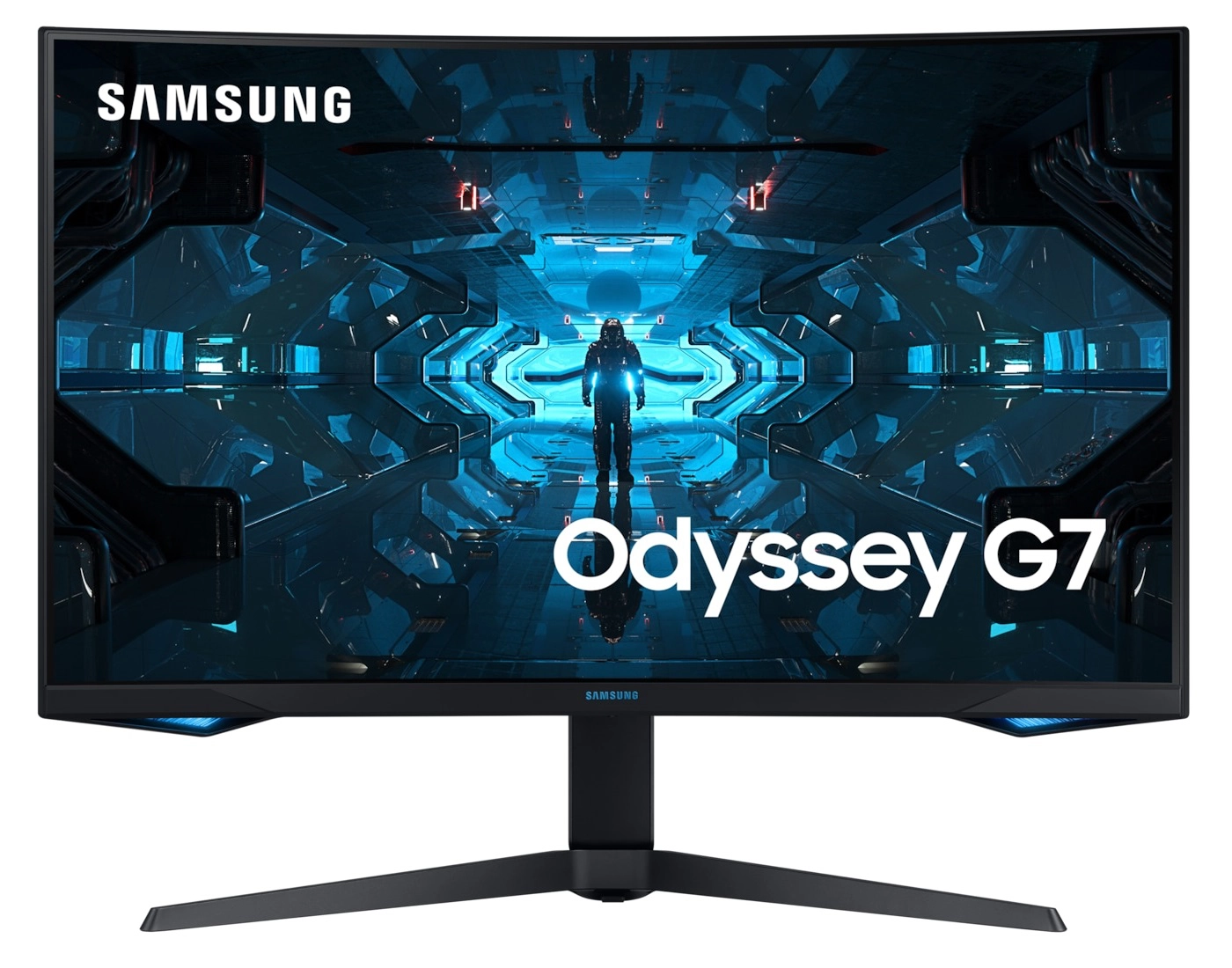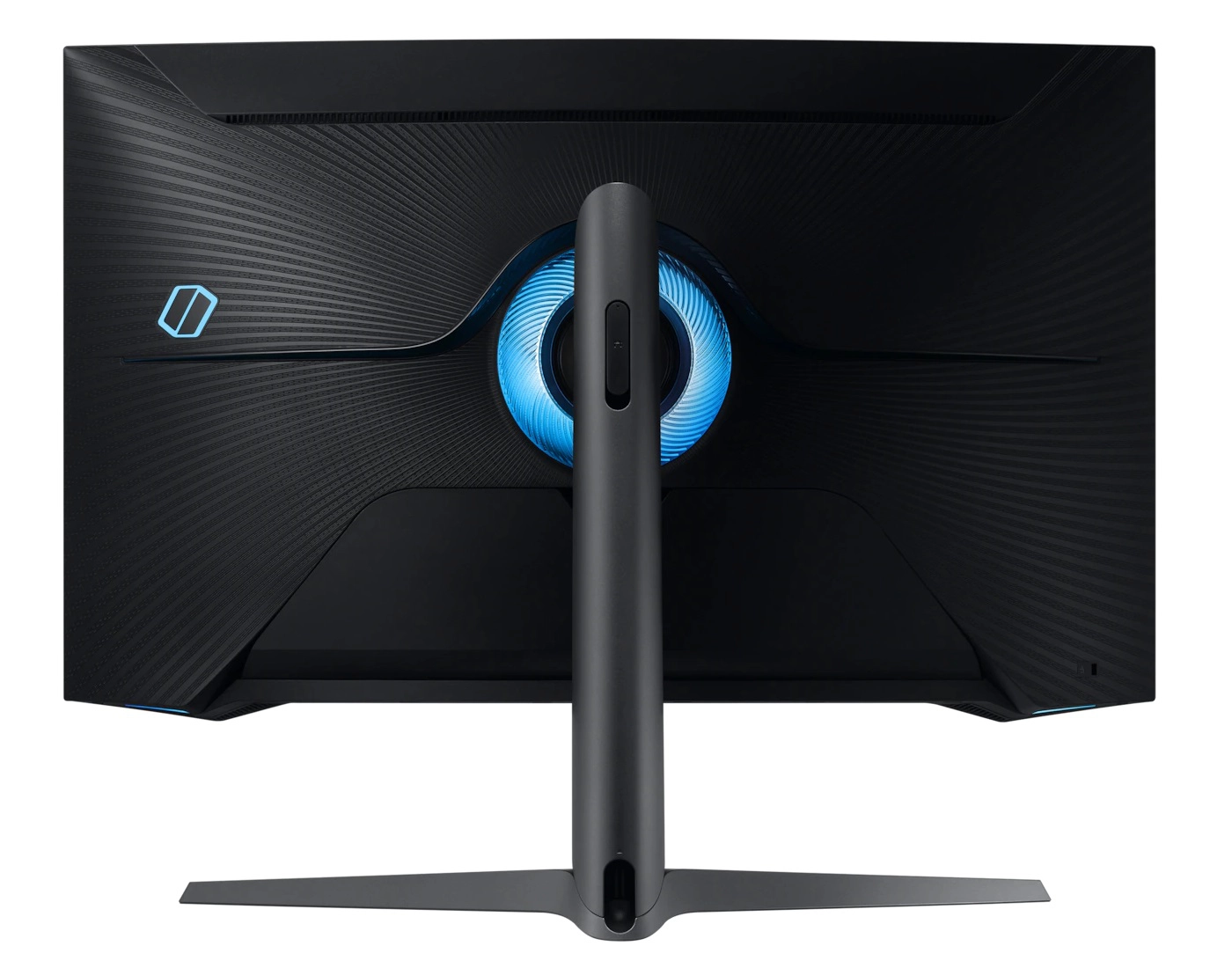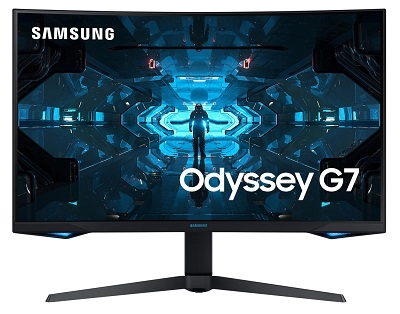Samsung C27G75T and C32G75T 240Hz WQHD VA models
As an Amazon Associate and Newegg Affiliate I earn from qualifying purchases made using the “Buy” button at the bottom of this post. Where possible, you'll be redirected to your nearest store. Further information on supporting our work.For some users, the combination of high refresh rate and a panel type that focuses on image quality over raw pixel responsiveness can be enticing. The Samsung C27G75T (LC27G75T with various regional suffixes) and C32G75T (LC32G75T with various regional suffixes), of the Odyssey G7 lineup, offer such a combination. The monitors have a distinctly ‘gamery’ look from the front, with an angular appearance in places and matte black plastic combining with some touches of colour. This includes a shiny light blue central Samsung logo and some underhanging ‘wings’ with some LEDs integrated into them. These are part of the ‘Core lighting’ feature and can be set to 5 different colours, including the default ‘ice blue’. A dual-stage bezel design is employed, including a slender bezel at the top and sides that’s flush with the rest of the screen plus a slim hard plastic outer component. The OSD (On Screen Display) is controlled by a downwards-facing joystick, beneath the central Samsung logo.

A 26.9″ (C27) or 31.5″ (C32) Samsung SVA (‘Super’ Vertical Alignment) panel is employed, with 1000R (relatively steep) curve. The monitors have a 2560 x 1440 (WQHD) resolution and include a light matte anti-glare screen surface. A 240Hz maximum refresh rate is supported, alongside Adaptive-Sync. This allows the monitor to leverage support for AMD FreeSync Premium Pro and Nvidia’s ‘G-SYNC Compatible Mode’, with a 60 – 240Hz variable refresh rate range (plus LFC). A 2500:1 static contrast ratio is specified, alongside 178° horizontal and vertical viewing angles and 10-bit colour support (8-bit + FRC assumed). The monitors are factory calibrated and use a flicker-free QLED backlight (Quantum Dots + blue LED) to achieve 95% DCI-P3 colour space coverage (125% sRGB). A 350 cd/m² typical maximum luminance is specified, with a peak brightness of 600 cd/m² for HDR purposes. Speaking of which, the monitor responds to HDR10 content and can put its bit-depth, colour gamut and peak luminance to good use. It also supports local dimming to enhance contrast, as part of the VESA DisplayHDR 600 certification.
Other points to note include a 1ms grey to grey response time (be cautious) and ‘Low Input Lag Mode’, whilst an MBR (Motion Blur Reduction) strobe backlight setting is included as an alternative to Adaptive-Sync. Other settings of interest include ‘Black Equalizer’ to enhance visibility in dark areas and Low Blue Light (LBL) settings including ‘Eye Saver Mode’. PIP (Picture In Picture) and PBP (Picture By Picture) is also included. The rear has an interesting design, with a corrugated matte black plastic used for most of the screen, in a sort of wavy optical illusion pattern. There is a central core of LEDs as well as a thread of LEDs above this and an LED logo to the left. These form another part of the ‘Core lighting feature’ and can be set to 5 different colours, or disabled if preferred. The included stand offers full ergonomic flexibility and can be removed to make way for an alternative 100 x 100mm VESA solution, if preferred. The ports are located beneath a removable plastic cover and include; AC power input (internal power converter), 2 DP 1.4 ports, HDMI 2.0, 2 USB 3.0 ports and a 3.5mm headphone jack.

Further details can be found on the manufacturer’s website. The C27 is listed for ~£450 ($700 USD) and C32 for ~£510 ($800 USD). User feedback suggests significant pixel responsiveness improvements over older 240Hz VA models and VA models more generally.

